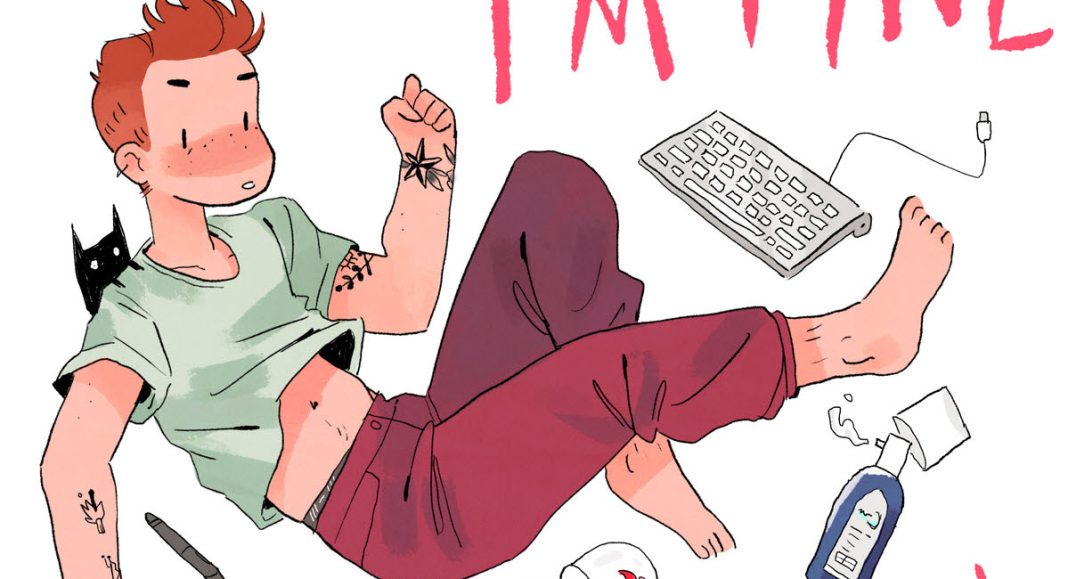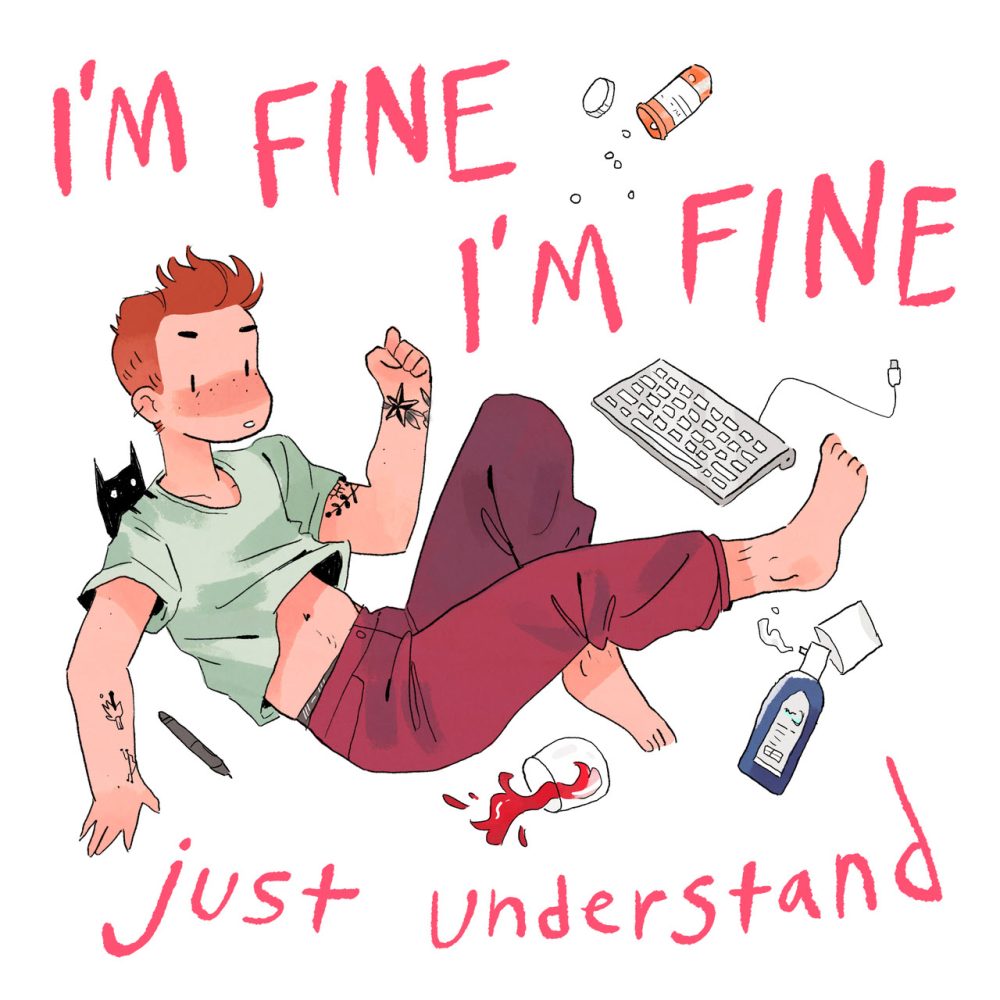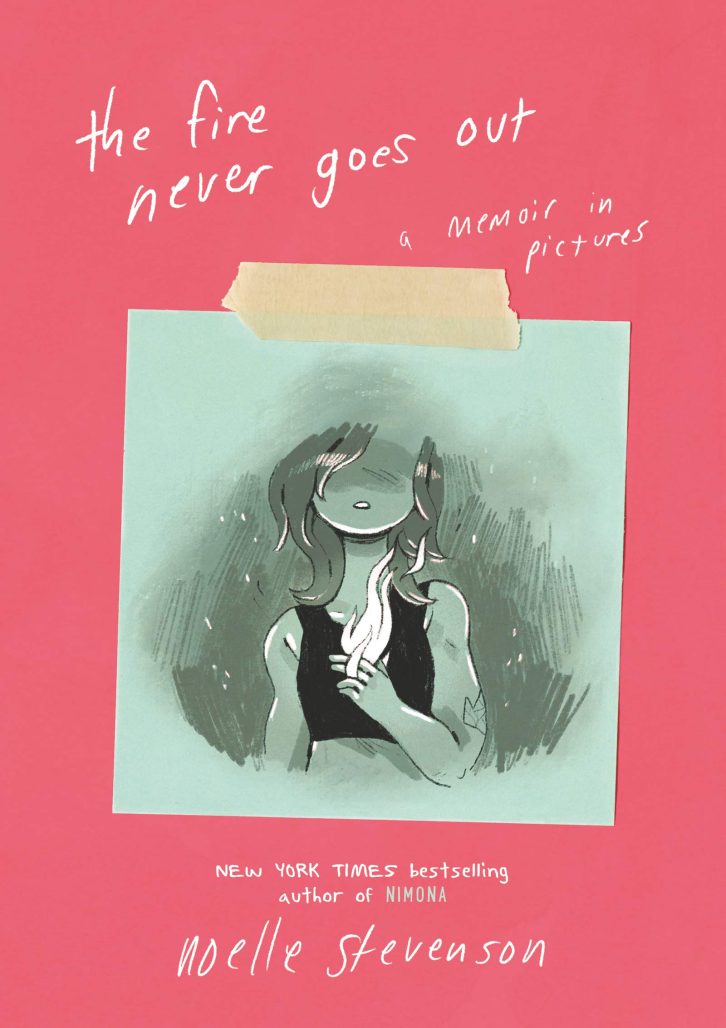By Sara L. Jewell
Eminent cartoonist and She-Ra and the Princesses of Power showrunner Noelle Stevenson announced today that they are launching a new Substack project entitled I’m Fine I’m Fine Just Understand where they will be publishing an exclusive collection of autobiographical comics about gender, mental health, getting older and more.
Noelle was kind enough to sit down for an email interview with The Beat to discuss their new project, setting boundaries online, and the importance of creative context.
Sara L. Jewell: Your new autobiographical project on Substack, I’m Fine I’m Fine Just Understand will focus on topics like gender, mental health, getting older, and more, and it sounds like it will be among some of the most personal work that you’ve made to date. How did it come about and what are you hoping that readers will take away from it?
Noelle Stevenson: Over the past few years, I’ve been feeling the need for a more intimate and private platform to share personal comics. In the past I’ve often made these comics in the heat of the moment and posted them on social media platforms like Tumblr or Twitter, but part of the nature of those platforms is that by posting them, you surrender control and they become a commodity for others to react to and share. I’ve ended up making a lot of comics that I’ve never posted anywhere because I find making them cathartic but I don’t feel comfortable sharing them in that way. I’m hoping Substack will give me a place to be vulnerable with these comics in a slightly more private and controlled way.
Jewell: Will these new comics be part of a larger narrative, or will they be more like standalone vignettes?
Stevenson: They’re going to be one-offs, some short and some longer, but my hope is that an overall narrative emerges along the way. It will be an interesting experiment to essentially draw a comic memoir in real time.
Jewell: I’m Fine I’m Fine Just Understand seemingly takes its name from a line in your 2020 memoir The Fire Never Goes Out. What do you see as the connection between these two projects? Is one a continuation of the other in some respects, or are you taking a new approach?
Stevenson: The Fire Never Goes Out wasn’t originally intended to be a graphic novel – it was a collection of almost 10 years of autobio comics, starting when I was 19. When I look back at those 10 years, I felt a lot of pressure to assure everyone that I was fine and handling everything, even when I was struggling. You can see that throughout The Fire Never Goes Out – deeply sad comics followed by chipper updates assuring everyone that don’t worry, it all worked and I’m okay now, only for the cycle to start all over again. It was very frustrating. I’m a storyteller, and that means I’m always trying to fit my life into a narrative…but that’s not really how it works, because stories have neat endings, and lives don’t. Sometimes you’re up, sometimes you’re down…and sometimes, somehow, you’re both at once. That’s what I’m Fine I’m Fine Just Understand is about: it’s an attempt to be okay with not being okay, and trying to embrace that chaos and uncertainty.
Jewell: Many creators are switching over to Substack, and cartoonists especially have embraced it (Adrian Tomine was just named the first Substack “Writer in Residence” last week). What kind of advantages does it offer as a platform for you over something like Patreon?
Stevenson: I like that I can create a page of free work that is easily followed in addition to work behind the paywall! Most of my work will be free, with more personal or intimate work being exclusive to paying subscribers. It’s mostly a way to create a bit of privacy, much the same as Patreon.
Jewell: As a follow-up to that, you’ve published explicitly autobiographical work before more traditionally in The Fire Never Goes Out – do you feel that a subscription model like Substack also offers advantages over traditional publishing?
Stevenson: I don’t see it as either/or. I have a deep love of books, and always will…but at the same time, there’s something freeing about approaching a project in small increments and publishing it in real time. It reminds me of webcomics, a little bit. When I made Nimona, the webcomic format shaped how I approached the narrative, but it ended up having a second life in print. I want to embrace the format of weekly updates and hopefully make it rewarding to read week to week, but that doesn’t mean I’m moving away from traditional publishing.
Jewell: You’re a creator who always seems to be juggling multiple projects – how do you create a balance between making single-creator comics and your more collaborative work on high profile animation projects, including comic adaptions of your work?
Stevenson: I’m in an interesting place right now, coming off a project that took over 5 years to complete and was incredibly collaborative with a huge team, so honestly it’s a nice change of pace to focus on my own stuff for a bit. I feel very lucky I’ve been able to do both collaborative work and solo work, and I find both rewarding in their own way, but sometimes it’s nice to just put pen to paper and see what happens.
Jewell: Like many, I’m an enormous fan of your groundbreaking work on She-Ra and the Princesses of Power. Did your long tenure as showrunner on the animated series change your approach to cartooning at all?
Stevenson: Definitely! I learned so much from the artists on the She-Ra team. I didn’t draw much during production because I was too busy, but lately it’s been nice to sit down to draw again and realize that I was learning and growing as an artist all along anyway.
Jewell: She-Ra in many ways joins shows like Steven Universe in spearheading the representation of queerness in mainstream entertainment for young people. Do you feel like your personal comics are also seeking a mainstream audience, or something smaller?
Stevenson: Making an animated show is definitely exciting in that you can reach a much wider audience, but lately I’ve been trying to embrace the small and the weird. It’s stressful to try and make a project appealing to the broadest possible audience, and I don’t think it’s ever benefitted my work to think of it that way. A lot of times, I didn’t know if anyone would like it except for me…but that was enough! I’m trying to get back to that place now.
Jewell: You’ve spoken on twitter a bit about the fact that not every comic that you make is intended to freely circulate. How do you determine how wide of an audience that you want to share autobiographical work with?
Stevenson: Social media has changed a lot since I first started posting my work on Tumblr. Lately, I’ve found it difficult to post to Twitter. There’s always the risk that a tweet will be put into a context that you didn’t intend. For example, I did Daily Comics Day for the first time ever this year, and then Twitter went and put my comics in the sidebar like I’d invented the concept of daily comics. I felt terrible, especially when so many cool people have been posting daily comics for years. Sometimes that broad exposure and loss of context when something goes viral isn’t the right thing for certain kinds of comics, and that’s how I feel about my more personal comics. I want them to be viewed in context.
Jewell: Many have reassessed their professional and creative priorities over the past few years due to the global upheaval of Covid-19. You’ve made some comics about how aspects of your identity crystallized during this period of enforced solitude where certain social pressures around appearance fell away. Did this also have an effect on your artistic practice?
Stevenson: It’s all become very chaotic, honestly. I’ve stayed pretty busy, but it’s hard for me to work consistently lately – it’s all wild bursts followed by periods of staring blankly or hyperfocusing on the exact wrong thing. I’m making it work. But there are days where I just make like, 50 picrews instead of working. It’s very stupid.
Jewell: I’m always intrigued by the weight cartoonists attribute to words vs. pictures in their work. You posted an old comic over the summer that mused about this specifically, writing that you “can’t fully rely on either to say what I want.” Do you usually begin with words, pictures, or a combination of both when you’re developing a comics narrative?
Stevenson: When it comes to my autobio comics, it’s sort of a mixture. I’m always trying to follow the flow of the comic, wherever it leads. Some comics end up changing a lot in the process when I realize I followed the wrong thread, and I have to go back and try to find the right one. But I see the words as an extension of the art, and I try to treat them that way by balancing them with the drawings and with the negative space to moderate how the reader will experience it.
I’m Fine I’m Fine Just Understand, the new project from Noelle Stevenson, launches on Substack today.










